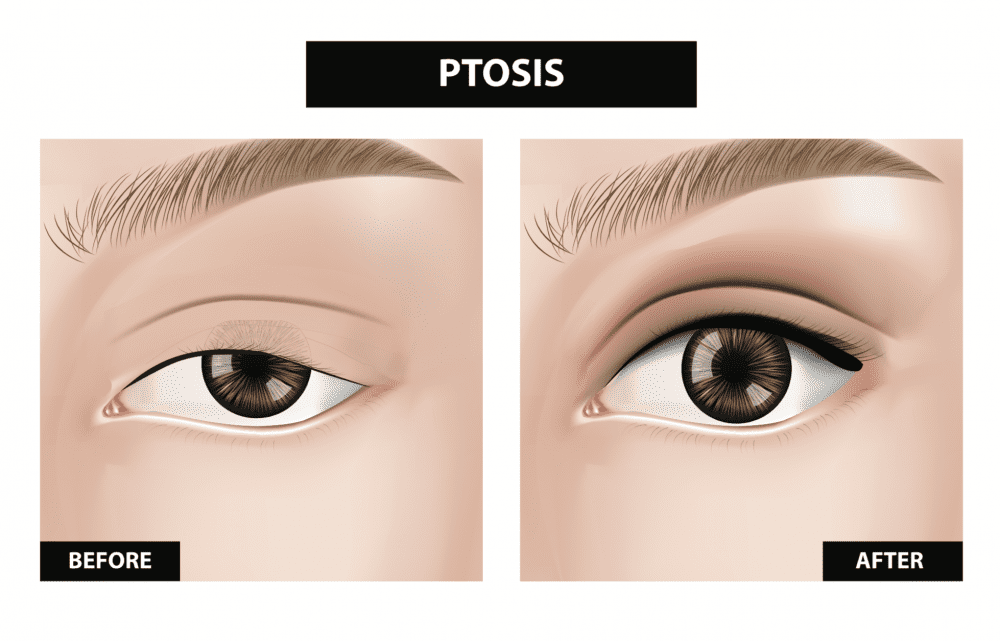7 Warning Signs of Ptosis To Watch Out For

With aging, everything droops to some extent. Your upper eyelids are not exempt. Upper eyelid drooping could be aesthetically bothersome to observe in the mirror, but as it progresses, it can become severe enough to compromise eyesight. Ptosis is the medical word for this eyelid drooping. As an Oculoplastic Plastic Surgeon, Dr. Dustin Herringer corrects Ptosis surgically. Sadly, Ptosis is not always noticeable, and some signs and symptoms may go unnoticed. As such, Dr. Herringer discusses some typical warning signs of Ptosis Peoria to watch out for.
1) Drooping eyelids
The most prevalent symptom associated with Ptosis is sagging of the upper eyelids. Generally, one eye will be wider than the other, or one eyelid will look lower.
If the variation is negligible and there are no additional symptoms, it could be due to weariness and eventually heal by itself. Nonetheless, it is vital to watch for any eyelid abnormalities or the emergence of new symptoms.
2) Crossed Eyes
Having misaligned or crossed eyes is frequently related to Ptosis. This concern is primarily because the cranial nerve involved with eyelid motion controls eye motion, alignment, focus, and tracking. The eye muscles are strongly linked; thus, once an eye illness impacts the eyelid, your eyeball will also be likely affected.
3) Head Retracted To See Clearly
This concern is common with serious ptosis conditions. Once the eyelid droops to the extent it starts covering or blocking the pupil; persons will frequently tilt their head to maintain proper vision.
With time, this adjustment could create neck and head issues. If Ptosis starts to impair your vision, you should consult an eye specialist to explore treatment options.
4) Double Vision
Crossed eyes are partially responsible for the symptom of double vision. Persons with crossed eyes frequently encounter double vision because of misalignment. Kids with congenital Ptosis may also experience double or impaired vision owing to astigmatism, a typical refractive defect.
5) Difficulty Blinking and Closing Your Eye
If Ptosis stems from a neurological illness that impairs the eye’s muscles or nerves, such as myasthenia gravis, it could be difficult to blink or close your eyes. The condition develops because the muscles and nerves responsible for closing or opening your eye are not cooperating.
6) Eye Fatigue
Individuals with Ptosis frequently report weariness around the forehead and eyes. This concern is because adjacent muscles work to make up for a sagging eyelid.
Eyebrows might remain elevated to pull the eyelid, leading to tired forehead muscles. If the muscles inside the eyelids push excessively hard to raise a drooping eyelid, they might also become fatigued.
7) Watery or Dry Eyes
Eyelids are crucial to maintaining the eyeball moist and safeguarding it from debris and dirt. Once the eyelid fails to close entirely or often, it could lead to dryness and irritation of the eyes.
If your eyes are constantly dry, the brain sends signals to your lacrimal gland, which is instrumental in making tears. Therefore, you might experience excessive tear production and eye-watering.
Once you suspect you have an eye condition, you should always take a more proactive approach and have them examined. Otherwise, you risk losing your eyesight. During your consultation at Arizona Ocular & Facial Plastic Surgery, Dr. Herringer will discuss everything you need to know about Ptosis and the necessary care solutions. Call the office near you or book an appointment online to get started today.
